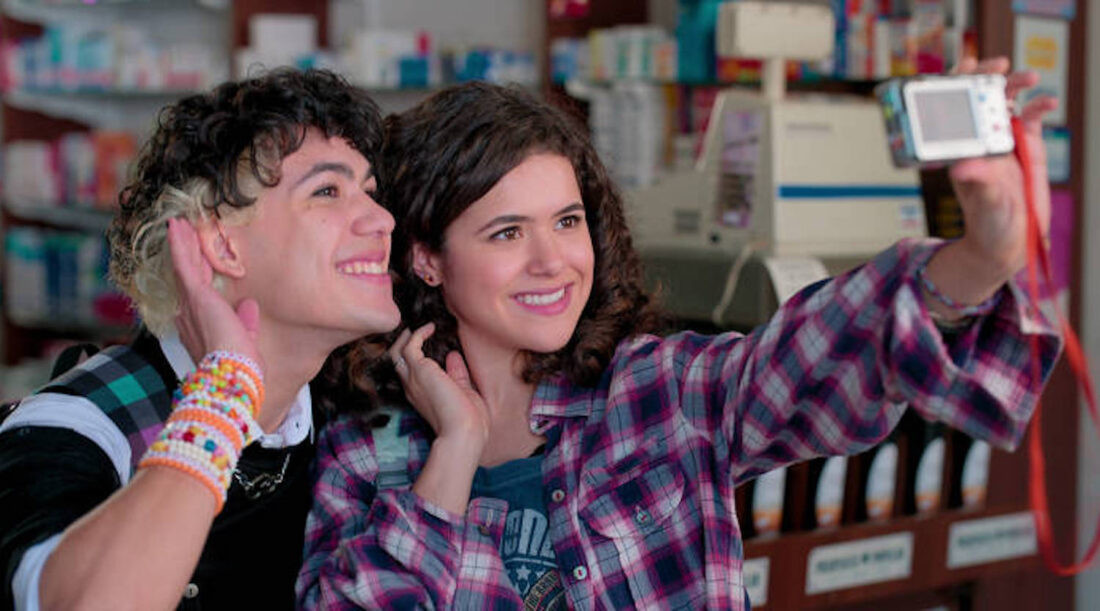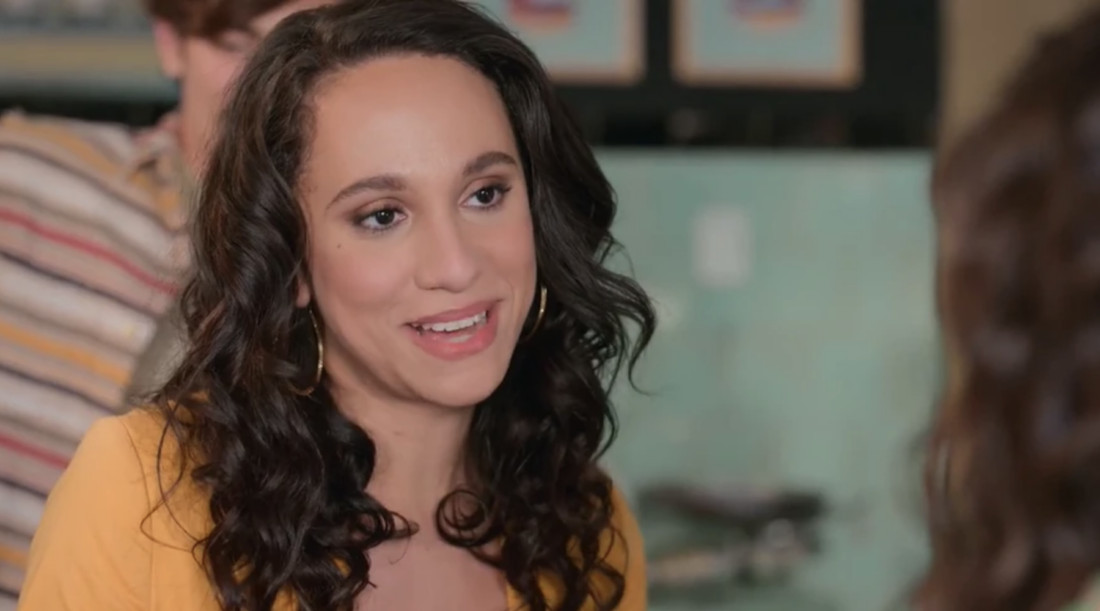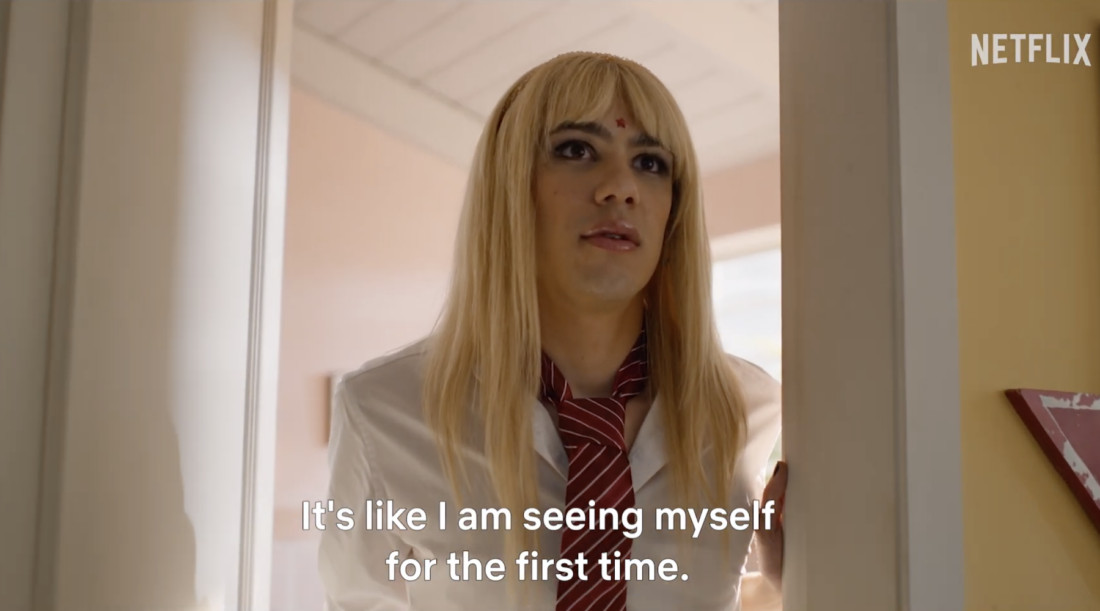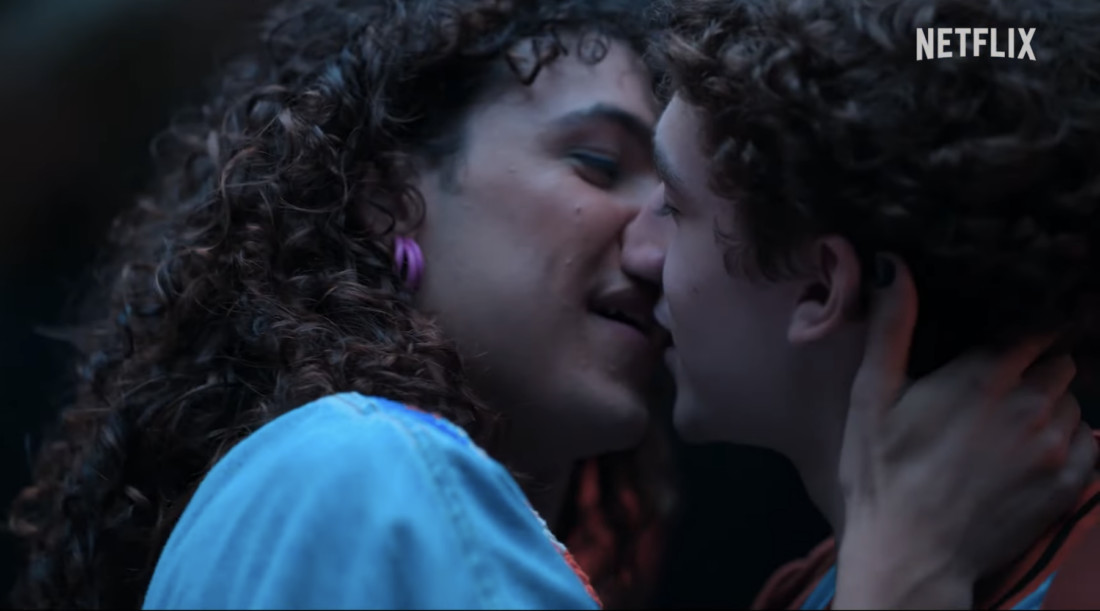Netflix is a treasure trove for international TV series, and if you’re a fan of time travel shows, you might be missing out on a gem from Brazil: Back to 15 (De Volta Aos 15). This isn’t just another teen drama; it’s a surprisingly clever and heartwarming series that uses the classic time travel trope to explore themes of identity, friendship, and growing up, with a uniquely Brazilian flair. If you love shows that blend lighthearted fun with genuine emotion, this time travel series deserves a spot on your watchlist.
Back to 15 introduces us to Anita, a thirty-year-old feeling lost and disillusioned. Her life takes an unexpected turn when she revisits her old photoblog – a relic from her teenage years, predating Instagram. Suddenly, through a quirk of digital nostalgia, Anita is transported back to her fifteen-year-old body on her first day of high school. This sets off a delightful and often chaotic journey through time. Each time she posts a photo to her retro photoblog, she jumps back to the present, only to find that her attempts to fix the past have created hilarious and often complicated new realities.
Yes, the premise of Back to 15 is undeniably whimsical. But isn’t that part of the charm of time travel as a concept? It allows for imaginative storytelling and often, a healthy dose of humor. De Volta Aos 15 captures this spirit perfectly, reminding viewers of the kind of feel-good, slightly off-the-wall shows that were popular on networks like The CW or Disney Channel in the past, think Kyle XY with a time-travel twist. Beneath the surface of its lightheartedness, however, Back to 15 thoughtfully addresses relevant issues like bullying, societal pressures, and even gentrification, making it more than just pure escapism.
 Anita and Camila as best friends in "Back to 15"
Anita and Camila as best friends in "Back to 15"
One of the most compelling aspects of Back to 15 is its portrayal of Anita’s best friend, Camila. Camila is a trans girl, and the show handles her journey with remarkable sensitivity and authenticity. What makes this representation even more impactful is that Nila, the actress who plays teenage Camila, was undergoing her own transition during filming. Adding to the show’s authenticity, Alice Marcone, a trans actor and writer who portrays the adult Camila, contributed to the writing of the first season. This behind-the-scenes and on-screen representation brings a depth and richness to Camila’s character that is rarely seen in time travel shows, or television in general.
From Book to Screen: Adapting “Back to 15”
Back to 15 is adapted from a series of books by Brazilian author Bruna Viera. Alice Marcone was involved in the show’s development from the outset. While Marcone is both an actor and writer, she identifies primarily as a screenwriter, noting the challenges of finding suitable acting roles.
In the original books, Camila is a cisgender, minor character. However, Marcone and creator Janaína Tokitaka made the significant decision to expand Camila’s role and reimagine her as trans. Marcone explained that Netflix wanted to incorporate contemporary themes into the adaptation, and they felt that making Anita’s best friend trans would be a meaningful and relevant update. When casting began, Marcone auditioned for and won the role of adult Camila, a character whose story is deeply personal to her and draws from her own life experiences.
Beyond Stereotypes: Camila’s Multifaceted Story
 Adult Camila portrayed by Alice Marcone in "Back to 15"
Adult Camila portrayed by Alice Marcone in "Back to 15"
When Nila was cast as the teenage Camila, she connected with Marcone, discovering shared visions for the character. Their collaboration extended beyond the screen, forging a close bond and plans for future projects. Nila began playing Camila while exploring her own identity as a trans person. During the second season’s filming, she changed her name to Nila and further embraced her transition. Her conversations with Marcone were crucial in shaping Camila’s character, ensuring authenticity and resonance.
Marcone emphasized that in the first season, the writers aimed to depict pre-transition Camila to illustrate the challenges of self-discovery for transgender individuals in a society lacking LGBTQ+ representation. Teenage Camila in season one uses an “emo” persona as a subtle expression of femininity while still presenting as male. Season two marks teenage Camila’s transition, portrayed as a positive and accepting experience within her family and friend circle. This was a conscious choice to showcase the support that many trans people need but rarely see depicted on screen.
Nila was particularly mindful of avoiding the trope of Camila becoming solely defined as “the trans character.” And indeed, Camila is a well-rounded individual. She is an aspiring writer with dreams of creating heroic witch stories and anxieties about her writing abilities. Interestingly, in many of Anita’s time-altered futures, Camila achieves her dreams and becomes a successful fantasy author, highlighting her potential beyond her trans identity.
Nila emphasizes that Camila’s struggles are not limited to her trans experience. Her challenges, particularly in season three, delve into universal themes of loneliness, insecurity, and self-esteem, alongside typical teenage romantic and creative struggles. Nila hopes viewers see Camila as a relatable character navigating her own journey of maturation, just like any other teenager in the series. She believes Back to 15 breaks new ground in its nuanced portrayal of a trans character within a time travel narrative. Nila sees Camila as having broad appeal, especially to trans teenagers who can identify with her journey, finding inspiration in her resilience, her reconciliation with family, her pursuit of love, and her journey to self-acceptance.
Time Travel as a Mirror to Ourselves
 Teenage Camila, played by Nila, in "Back to 15"
Teenage Camila, played by Nila, in "Back to 15"
Marcone points out that time travel stories tap into our nostalgia for the past, but often reveal that the past was not as idyllic as we remember. In De Volta Aos 15, Anita’s time-traveling isn’t just about fixing past mistakes to improve her present; it’s about confronting the underlying social issues that shaped her life. Marcone believes time travel narratives encourage self-reflection and acceptance of the choices that have led us to where we are.
Marcone draws a parallel between time travel and therapy, suggesting that “time travel can function like therapy.” Just as therapy involves revisiting and reframing past events to reshape the present, time travel stories like Back to 15 explore this premise. Anita’s journey becomes a process of revisiting key moments, helping herself and her friends grow and evolve. This journey of healing, growth, and self-improvement mirrors the therapeutic process of examining one’s past to build a better future.
Writer Gautier Lee emphasizes that De Volta Aos 15 is fundamentally about self-discovery. The show aims to demonstrate that even amidst chaotic timelines, individuals can evolve, connect with others, and grow together. Lee cites influences from classic time travel stories like Back to the Future (which gets a nod in season two) and other time-bending narratives like Happy Death Day and Seconds. When co-directing a “Groundhog Day” style episode, Lee drew inspiration from the “fun montages” in superhero shows like The Flash and DC’s Legends of Tomorrow, adding an extra layer of lightheartedness to the time-loop trope.
A Show That Embraces Queerness
 A scene depicting a kiss in "Back to 15"
A scene depicting a kiss in "Back to 15"
While Camila might appear to be the sole queer character in De Volta Aos 15‘s first season, season two expands the show’s LGBTQ+ representation significantly. Anita’s sister, Luiza, enters into a lesbian romance, and more queer characters are introduced, enriching the show’s diverse tapestry.
Lee, who joined the writing team in season two, explains that this increased queerness felt like a natural progression. A minor character, Bruna, a musician, was given a backstory involving a guitar stolen from an ex-girlfriend, leading to the decision to make Bruna lesbian. This storyline evolved organically, with Bruna eventually becoming romantically involved with Luiza. Lee emphasizes the writers’ commitment to portraying queer stories as naturally as any other aspect of teenage life, normalizing LGBTQ+ experiences within the narrative.
Marcone notes that Netflix’s desire for a “feel-good” show influenced the show’s tone. Despite Marcone’s usual preference for darker genres, she appreciates how humor makes complex themes more accessible to a broader audience. Lee, a Black non-binary dyke, highlights the importance of having queer and BIPOC writers on staff. This diversity behind the scenes, she argues, allowed them to authentically capture the beauty and confusion of being young and queer. The focus remained on portraying these characters as teenagers first, navigating typical teenage experiences – making mistakes, rebelling, falling in love, and experiencing heartbreak. Lee points to De Volta Aos 15‘s success as Netflix’s top non-U.S. show for two weeks, as evidence that diversity in storytelling leads to better outcomes and wider audience appeal.
If you’re looking for Time Travel Shows On Tv that offer more than just sci-fi thrills, Back to 15 is a must-watch. It’s a heartwarming, funny, and insightful series that blends the fantastical elements of time travel with relatable stories of growing up, self-discovery, and the importance of embracing who you are. And with its focus on diverse characters and authentic representation, it’s a time travel adventure that feels refreshingly modern and deeply resonant.
